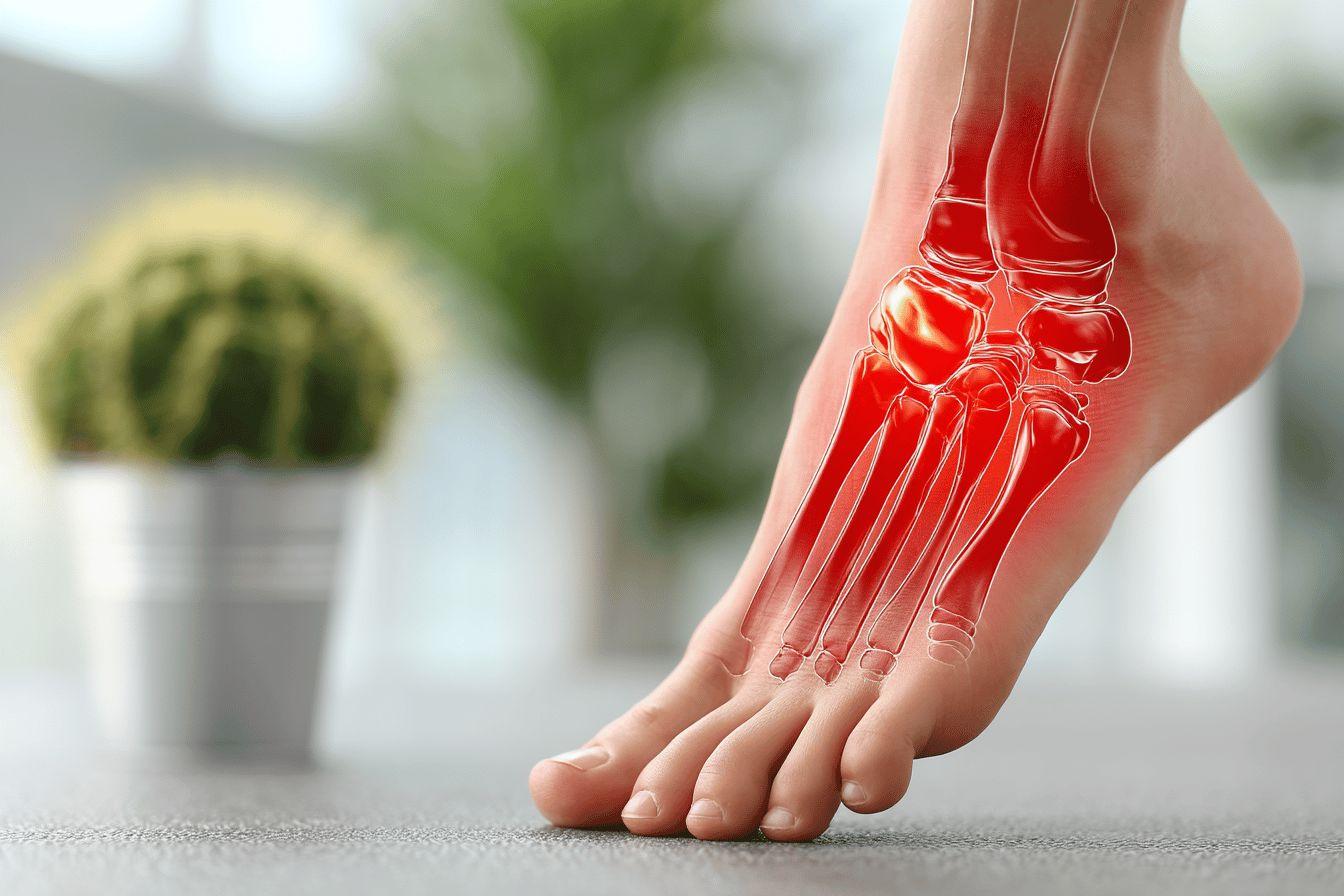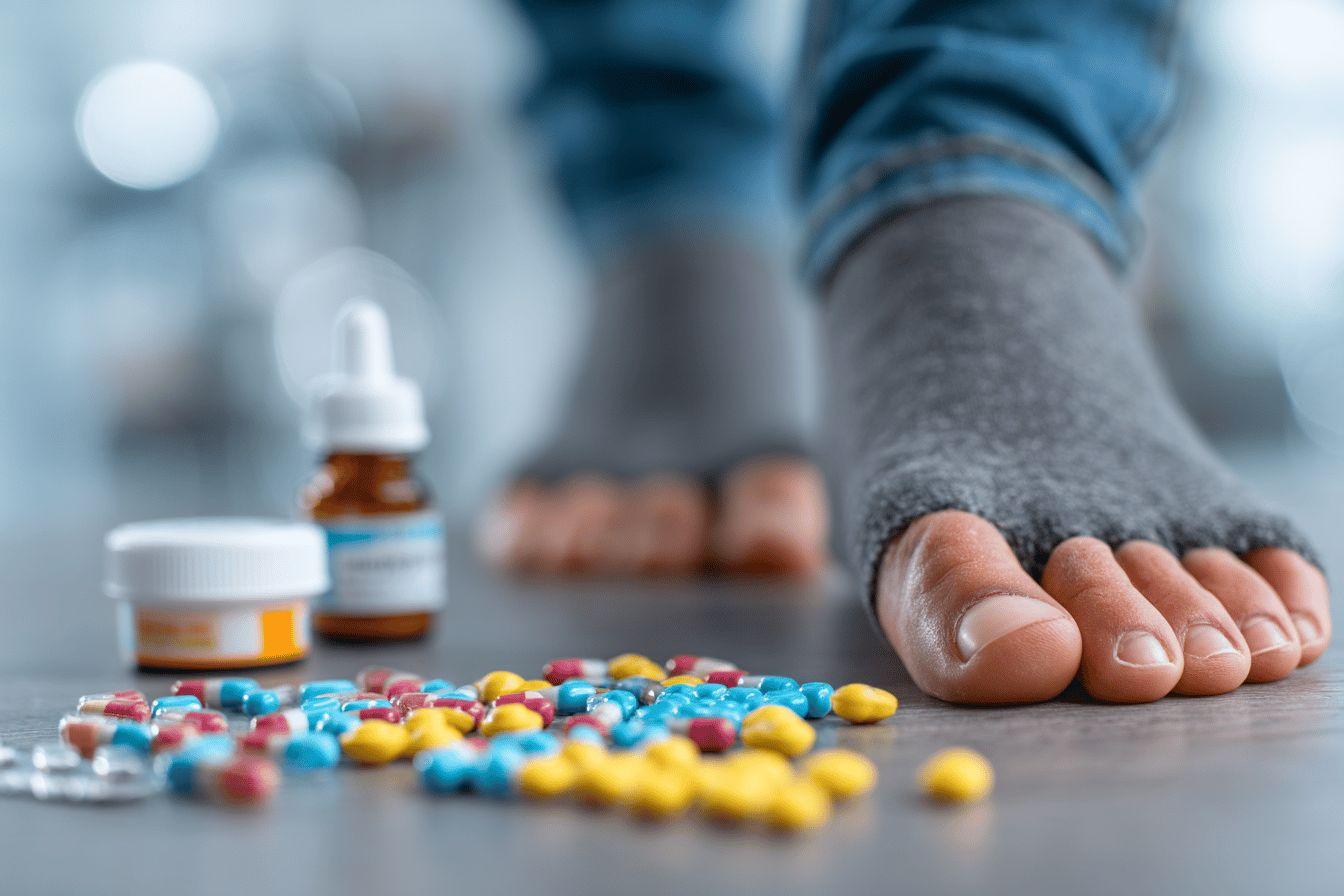Article at a glance
A red and painful toe can signal various medical conditions requiring special attention.
- Various causes: gout, trauma, ingrown toenails, or infections such as paronychia can be responsible.
- Associated symptoms such as swelling, localized warmth, or difficulty walking help to identify the cause.
- Treatment combines rest, ice application, anti-inflammatory medications, and specific care depending on the cause.
- Prompt medical consultation is required in cases of severe, persistent pain or signs of infection.
A red and painful toe can significantly disrupt your daily life. This common, often overlooked condition deserves our full attention because it can signal a variety of medical conditions. Let's review the possible causes, associated symptoms, and the most effective treatments to regain comfort and mobility.
Main causes of a red and painful toe
The appearance of redness and pain in the toe can result from many conditions. Accurately identifying the underlying cause is the essential first step toward appropriate treatment.
Gout is among the most common causes. This form of inflammatory arthritis occurs when uric acid crystals build up in the joint, causing intense inflammation. The big toe is particularly vulnerable to this condition, which can also cause numbness of the big toe in some cases.
Direct trauma such as impact or crushing is another major cause of a red and painful toe. An ingrown toenail, resulting from improper nail trimming or wearing tight-fitting shoes, can also cause painful inflammation.
Infections are also a common source of problems. Paronychia, an infection of the skin around the nail, or an abscess can cause redness, swelling, and intense pain. If left untreated, these infections can spread and become more serious.
The following table presents the main causes and their distinguishing characteristics:
| Cause | Characteristics | Risk Factors |
|---|---|---|
| Gout | Sudden, severe pain, redness, warmth | Diet high in purines, obesity, Hypertension |
| Ingrown toenail | Localized pain, redness at the edge of the nail | Improper nail clipping, tight shoes |
| Trauma | Bruising, swelling, redness | Sports activities, unsuitable shoes |
| Infection | Progressive redness, warmth, possible drainage | Cuts, injuries, weakened immune system |
Other medical conditions such as arthritis, circulatory problems, or frostbite can also cause these symptoms. In some cases, tingling in the foot may accompany the redness and pain.

Symptoms associated with Identify
A red and painful toe is often accompanied by other symptoms that can help determine the exact cause. Careful observation of these additional symptoms can guide the diagnosis and tailor treatment.
Commonly associated symptoms include:
- Localized or diffuse swelling of the toe
- Sensation of warmth to the touch
- Limitation of toe movement
- Difficulty walking or wearing shoes
- Deformity of the toe or nail
- Pus discharge (if infected)
The presence of numbness in the toes may indicate a neurological component. The intensity and type of pain vary considerably depending on the cause - from a stabbing, throbbing pain associated with infections to a sudden, sharp pain associated with gout.
If the redness extends beyond the toe or is accompanied by fever, chills, or general malaise, it may indicate a more serious infection requiring immediate medical attention. The presence of red lines running up towards the ankle is a particularly worrying warning sign, possibly indicating lymphangitis.
The evolution of symptoms over time also provides valuable clues. Pain that intensifies at night may suggest certain specific conditions, while pain after physical activity points to other diagnoses.
Effective Treatments for Pain Relief
When faced with a red and painful toe, several therapeutic approaches can be considered, depending on the identified cause. Prompt and appropriate treatment generally effectively relieves symptoms and promotes complete healing.
For mild to moderate pain, simple measures such as applying ice for 15-20 minutes several times a day can reduce inflammation. Elevating the foot above heart level also helps reduce swelling by promoting venous return.
Nonsteroidal anti-inflammatory drugs (NSAIDs) such as ibuprofen effectively relieve pain and inflammation. For gout, specific medications such as colchicine may be prescribed, while infections generally require antibiotic treatment.
For an ingrown toenail, regular soaking in warm water with Epsom salts can relieve symptoms. Minor surgical techniques such as partial toenail elevation may be necessary in more severe or recurring cases.
Long-term approaches include wearing proper footwear, good foot hygiene, and regular preventative care. For people suffering from chronic conditions such as arthritis, physical therapy can provide substantial relief.
If you also suffer from numb toes, it is important to speak to your doctor as this may indicate an underlying neurological problem requiring a different treatment approach.
Depending on the severity and cause, a doctor may recommend these treatments in a specific sequence:
- Initial treatment to relieve pain and inflammation
- Targeted treatment for the specific identified cause
- Preventative measures for Prevent recurrences
- Regular follow-up to assess treatment effectiveness
A medical consultation becomes essential if the pain is severe, persists for more than a few days, or is accompanied by signs of systemic infection. People with diabetes or circulatory problems should be particularly vigilant and seek prompt medical attention for any toe problem, even if it seems minor.
With an appropriate therapeutic approach and appropriate preventive care, most red and painful toe problems can be effectively resolved, allowing a rapid return to daily activities without discomfort.





Leave a comment
This site is protected by hCaptcha and the hCaptcha Privacy Policy and Terms of Service apply.